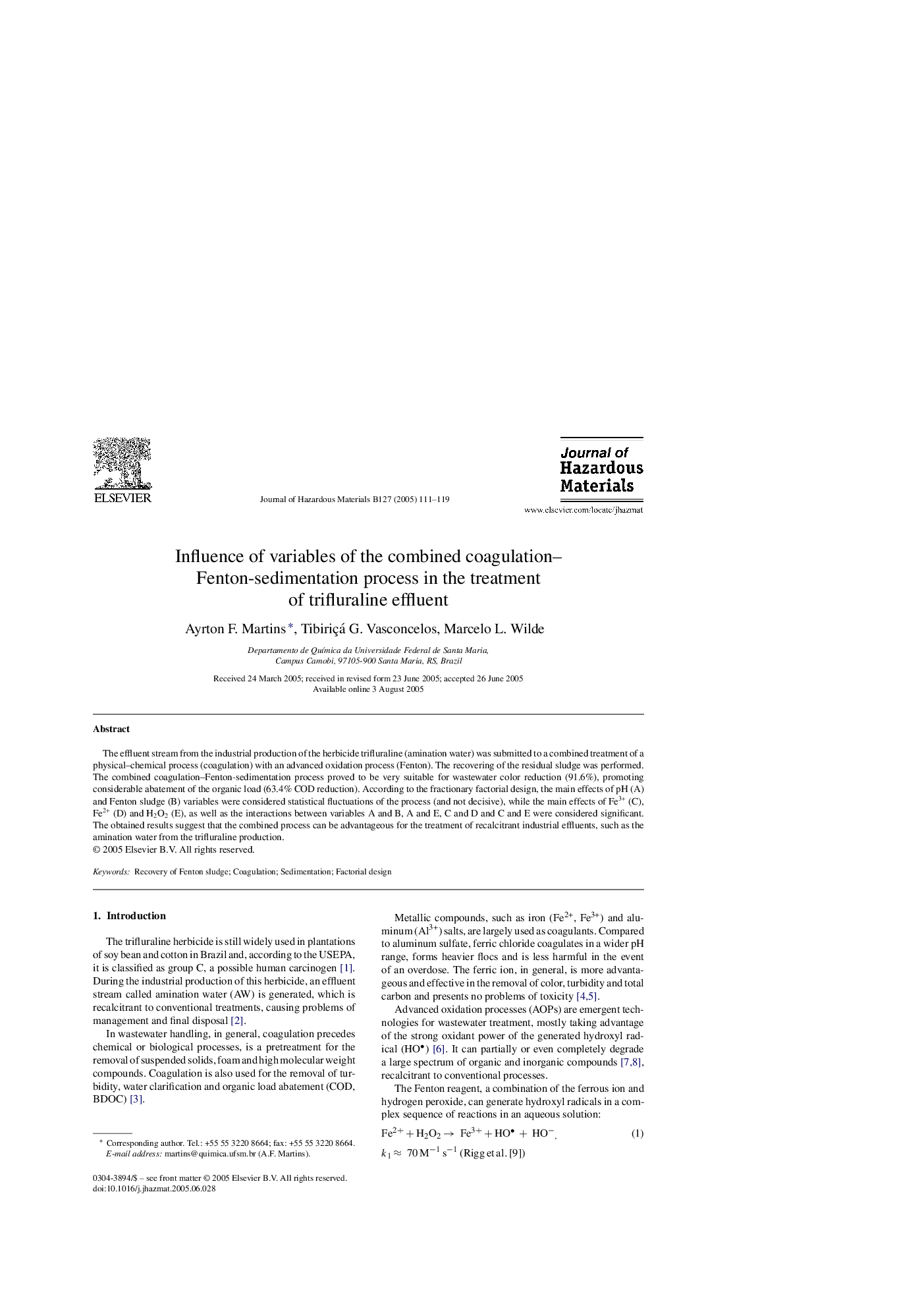| Article ID | Journal | Published Year | Pages | File Type |
|---|---|---|---|---|
| 9674065 | Journal of Hazardous Materials | 2005 | 9 Pages |
Abstract
The effluent stream from the industrial production of the herbicide trifluraline (amination water) was submitted to a combined treatment of a physical-chemical process (coagulation) with an advanced oxidation process (Fenton). The recovering of the residual sludge was performed. The combined coagulation-Fenton-sedimentation process proved to be very suitable for wastewater color reduction (91.6%), promoting considerable abatement of the organic load (63.4% COD reduction). According to the fractionary factorial design, the main effects of pH (A) and Fenton sludge (B) variables were considered statistical fluctuations of the process (and not decisive), while the main effects of Fe3+ (C), Fe2+ (D) and H2O2 (E), as well as the interactions between variables A and B, A and E, C and D and C and E were considered significant. The obtained results suggest that the combined process can be advantageous for the treatment of recalcitrant industrial effluents, such as the amination water from the trifluraline production.
Related Topics
Physical Sciences and Engineering
Chemical Engineering
Chemical Health and Safety
Authors
Ayrton F. Martins, Tibiriçá G. Vasconcelos, Marcelo L. Wilde,
